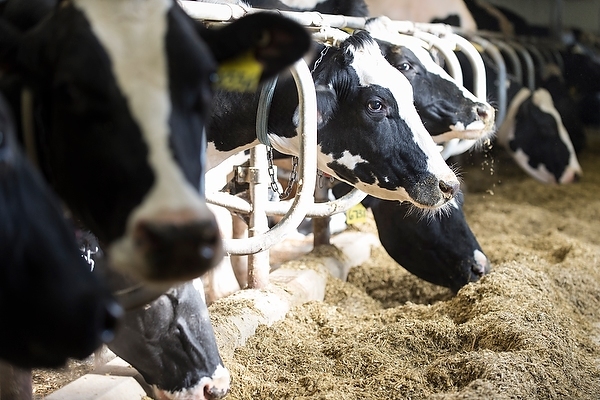UW experts forecasting 2015 Wisconsin agriculture trends

Signs point toward a decline in net farm income in 2015, according to agricultural and applied economics Professor Bruce Jones. One major factor will be milk price, which is expected to drop by at least $7 per hundredweight.
In 2014, the total net farm income in Wisconsin reached an all-time high of more than $4 billion, but agricultural experts at the University of Wisconsin–Madison are predicting some changes in 2015.
“The big word is dairy,” says Bruce Jones, a professor of agricultural and applied economics at the University of Wisconsin–Madison. “The price of milk was quite strong throughout most of 2014. That income gain — and some reductions in feed costs — helped improve the margins for dairy farmers, and that translated into higher net farm income.”

Bruce Jones
Jones will be among a handful of UW–Madison and UW-Extension experts to recap the status of Wisconsin’s agricultural enterprise in 2014 and discuss trends developing for 2015 at the Wisconsin Agricultural Economic Outlook Forum. The forum will take place Wednesday, Jan. 21, on the UW–Madison campus.
Jones says signs point toward a decline in net farm income in 2015. “Nothing to get necessarily all that worried about, but it’s not likely to be as good as it’s been the last three or four years,” says Jones. One major factor will be milk price, which is expected to drop by at least $7 per hundredweight.
However, feed prices are expected to remain low, which would bring dairy margins back into the normal range. Farmers will also benefit from lower fuel costs in 2015, making it cheaper to run tractors and other machinery.
“Going into 2015, the big news is the reduction in oil prices. That’s going to translate into obviously lower fuel costs for most farmers in the coming year,” says Jones. “If this thing plays through the system and everything falls as you would expect, farmers could (also) be looking at more affordable fertilizer.”
Other observations about Wisconsin agriculture:
- 2014 was the first year of the Margin Protection Program (MPP) for dairy farmers, a new risk-protection program created through the most recent Farm Bill. About half of Wisconsin dairy producers purchased some level of the new insurance program, and there will be more opportunities to sign up in the future.
- Prices paid to dairy farmers for milk have already begun to decline going into 2015. For those dairy farmers who have purchased margin protection from the MPP, analysts expect prices to sink low enough to trigger insurance payments in some instances.
- Rent paid for cropland is likely to experience some downward pressure as crop prices have declined. On the other hand, the influence of the state’s dairy business is apt to support cash land rents, as operations look for manure management options and places to expand crop production.
- While crop prices declined during 2014, they appear to have stabilized. Lower oil prices should help corn and soybean growers have a somewhat better year in 2015.
- Seed costs are expected to continue to grow in 2015, but at a tempered rate. Reduced planting and lower commodity prices are expected, so seed supplies should be adequate for the demand.
The Renk Agribusiness Institute has released an executive summary developed for the Wisconsin Agricultural Economic Outlook Forum and will also post presentations made by forum panelists.




